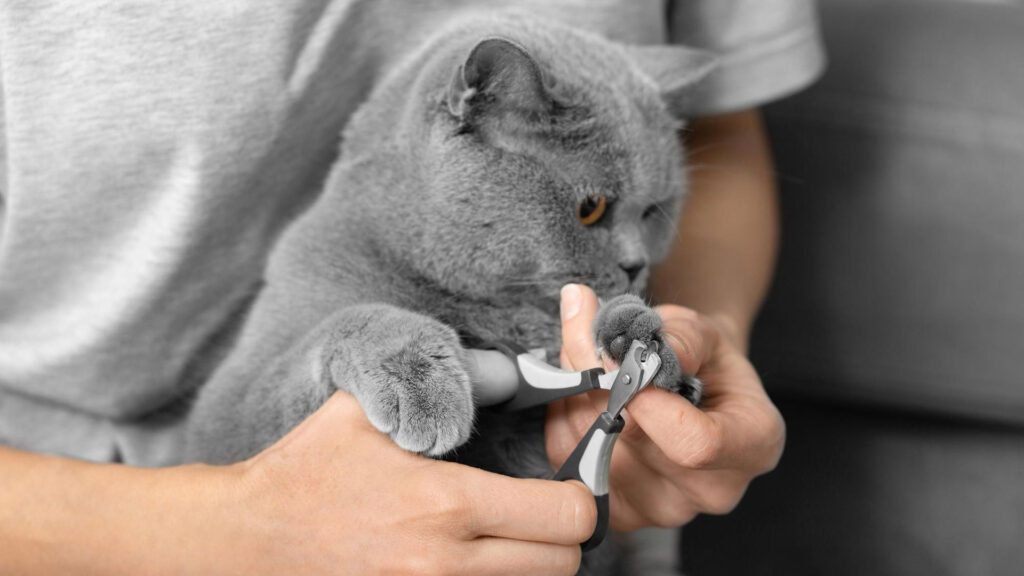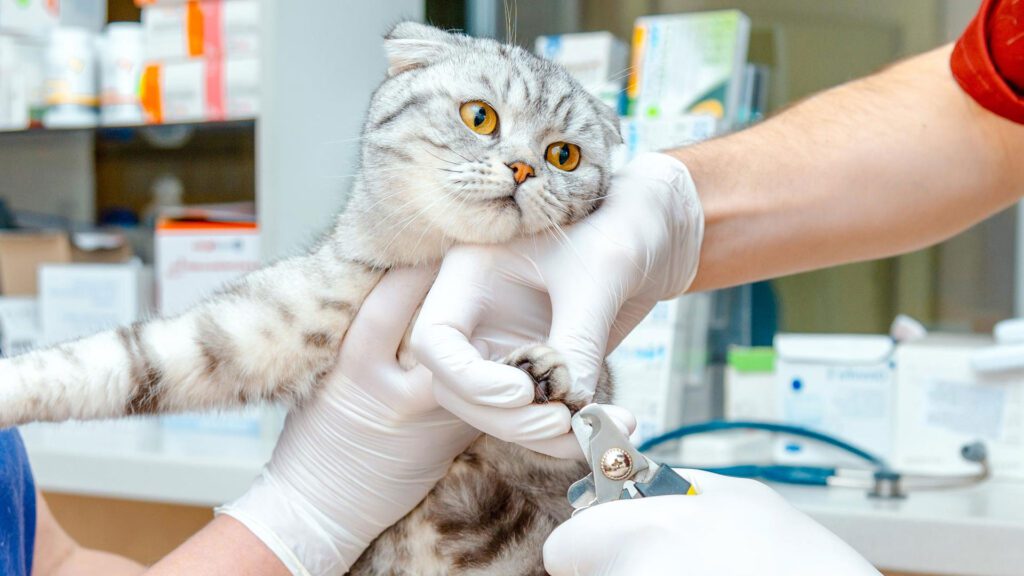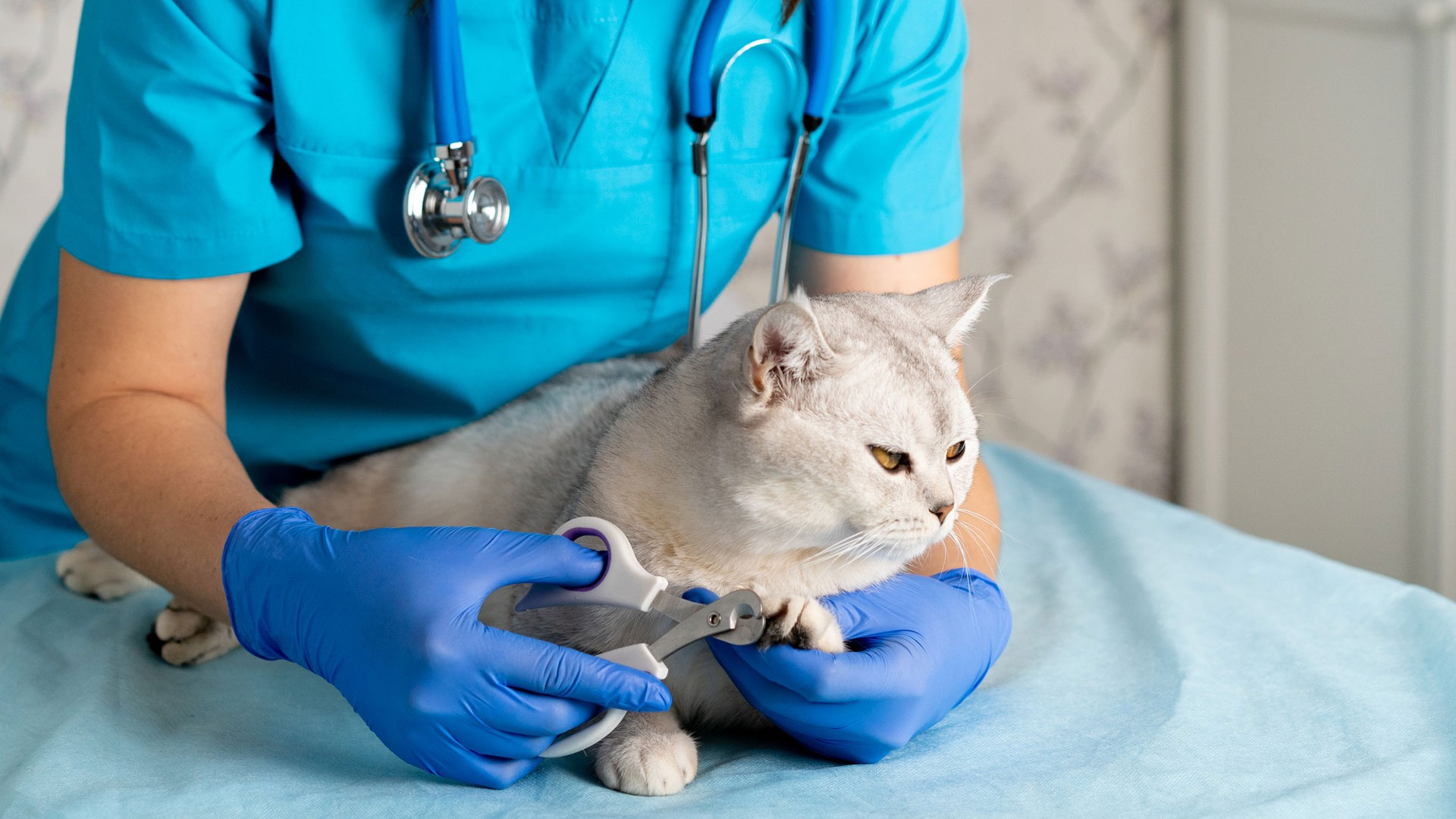Cat owners often consider this approach if their cat’s scratching habits are getting intense. But how much does it cost to get a cat declawed, and is it even worth it?

Get all the answers in this article!
What Exactly Is Cat Declawing?
Cat declawing is a surgical procedure in which a cat’s claws are permanently removed.
Excessive and inappropriate scratching behavior causes cat owners to declaw their cats.
Why Do Cats Need Claws?
Cat claws are multi-functional tools that serve quite a few purposes in their life, such as
Cats have an instinct to climb and claws help them with it.
Claws are used for hunting and marking their territories.
They are used to maintain stability when jumping and running.
Average Cost To Declaw A Cat & Factors That Affect It
Here in the US, the cost of declawing your cat is around at least 500$ and could exceed depending on some factors:
Age plays a role as kittens could be less expensive compared to adults. This is because they happen to have a faster recovery time.
It depends on where you live too. For example, vets in bigger cities may charge more.
Anesthesia, blood tests, and post-surgery monitoring also add up to the bill.
The Two Methods Of Declawing A Cat

Now, let’s look at two of the most common procedures used to declaw a cat:
Scalpel Blade
This is the traditional and most common method of declawing.
However, there’s a slower recovery time than its counterpart, and it could be more painful.
Laser
Relatively less common and more expensive.
The advantage here is that it has a faster recovery time and less painful.
Cons of Declawing Cats

The general consensus is that this activity carries far more cons than pros; let us have a look:
Pain And Discomfort
Declawing is a painful and invasive surgery that can result in ongoing discomfort in the paws.
The recovery period can be extensive and may require pain medication.
Behavioral Issues
Declawing can lead to behavioral problems such as aggression, litter box avoidance, or decreased physical activity.
A positive relationship with your cat could start diminishing, too.
Increased Risk Of Injury
Declawed cats cannot defend themselves effectively against potential threats, such as other animals or predators. This can put them at a higher risk of injury or harm.
Long Term Health Complications
Long-term health complications such as arthritis, nerve damage, or chronic pain could arise. It can also increase the risk of infection or complications during the surgery.
Ethical Concerns — What Do Veterinarians Say?
When carrying out such a procedure, you have to consider the moral implications. Declawing is like cutting off the tips of your fingers so you can imagine the pain.
It is banned in New York and Maryland, and countries around the world like UK and Australia. Furthermore, most organizations discourage cat declawing, such as:
The American Veterinary Medical Association (AVMA)
The Humane Society of the United States (HSUS)
The American Society for the Prevention of Cruelty to Animals (ASPCA)
There are some rare occasions when a veterinarian may recommend declawing, such as the cat remains destructive despite conscientious attention to behavioral modification and alternatives.
Alternatives To Declawing

Regular Nail Trimming
Trimming your cat’s nails every two to three weeks prevents them from becoming too sharp and causing damage.
This is less sudden and not extreme for the cat.
Scratching Posts
Provide your cat with vertical and horizontal scratchers to satisfy their natural urge to scratch. This will help to keep their nails healthy and reduce the need for declawing.
Positive Reinforcement
Teach your cat and redirect their behavior away from furniture and other unwanted areas.
To keep them away, you could use catnip, aluminum foil, double-sided tape, and various sprays. It’s also smart to give your cat a reward system for positive behavior.
Always remember to be patient with them!
You Are Now Well Versed With The Declawing Procedure!
You now not only know the cat declawing cost, but the whole procedure. If you have any further queries, do talk to your vet.
With this perspective, you have to decide if you want to declaw your cat, and we hope it would be the right one!





